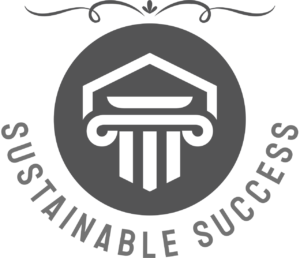In a rapidly changing world, the concept of business success has evolved beyond mere profitability. Today, achieving sustainable success involves integrating environmentally and socially responsible practices into the core of a business’s operations. This blog post delves into the concept of “greening the bottom line” and explores how businesses can thrive in today’s dynamic landscape by embracing sustainability.
1. The Significance of Sustainable Business Practices:
Sustainability has transcended its status as a niche concern and has become a key driver of business success. Beyond environmental benefits, consumers are actively seeking products and services from companies that prioritize sustainability. Such companies earn not only customer loyalty but also an enhanced brand reputation. Additionally, investors are increasingly favoring businesses that demonstrate a commitment to responsible practices, recognizing that these companies are better positioned for long-term growth.
2. The Business Case for Sustainability:
The data is compelling – sustainable practices are not just good for the planet, but also for a company’s financial health. Studies have shown that businesses that prioritize sustainability often experience increased profitability. For instance, energy-efficient measures and waste reduction can lead to significant cost savings over time. Companies that align themselves with sustainability also tend to attract a more engaged workforce, which further contributes to their bottom line.
3. Strategies for Greening the Bottom Line:
3.1. Energy Efficiency and Resource Management:
Implementing energy-efficient practices isn’t just an environmental win; it’s also a financial one. Simple steps like switching to LED lighting, optimizing heating and cooling systems, and adopting renewable energy sources can lead to substantial energy cost reductions. Similarly, efficient resource management through recycling, reducing water usage, and minimizing waste generation can translate to significant savings.
3.2. Sustainable Supply Chain Management:
A sustainable supply chain isn’t just about sourcing eco-friendly materials; it’s about optimizing the entire chain to reduce its environmental impact. Collaborating with suppliers who share the commitment to sustainability, using local sourcing to minimize transportation emissions, and adopting circular economy principles are effective strategies to green your supply chain.
3.3. Product Innovation and Design:
Smart product design can give your business a competitive edge. Consider incorporating sustainable materials, designing for longevity, and minimizing packaging waste. Customers increasingly value products that align with their eco-conscious values, which can lead to increased sales and brand loyalty.
3.4. Employee Engagement and Corporate Culture:
A sustainable corporate culture goes beyond adopting greener practices – it involves engaging employees in the company’s sustainability mission. Offer remote work options to reduce commuting emissions, support volunteering efforts, and provide incentives for eco-friendly behaviors. Engaged employees are not only happier but also more likely to advocate for the company’s sustainable initiatives.
4. Measuring and Reporting Sustainability:
To track progress and maintain accountability, it’s essential to measure your sustainability efforts. Metrics like carbon footprint, water usage, and social impact can provide valuable insights. Transparent sustainability reporting demonstrates your commitment and builds trust with customers, investors, and other stakeholders.
5. Overcoming Challenges in Implementing Sustainability:
Transitioning to sustainable practices may face challenges like initial costs, resistance to change, and lack of awareness. To overcome these hurdles, start with small, achievable steps, communicate the benefits to employees and stakeholders, and educate your workforce about the importance of sustainability.
6. Case Studies: Real-Life Examples of Greening the Bottom Line:
- Company A: Through a combination of energy-efficient upgrades and waste reduction initiatives, Company A lowered its operational costs by 15% within two years.
- Company B: By redesigning its packaging to be eco-friendly, Company B not only reduced its environmental impact but also saw a 20% increase in customer satisfaction and a 10% boost in sales.
7. Future Trends in Sustainable Business:
The future of sustainable business holds exciting possibilities. The rise of the circular economy, the pursuit of carbon neutrality, and the integration of AI for sustainable practices are trends that businesses should be prepared to embrace.
Conclusion:
Sustainable success is no longer an optional pursuit; it’s a strategic imperative. By greening the bottom line and integrating sustainable practices, businesses can secure a brighter future for both their operations and the planet. As the business landscape continues to evolve, those who prioritize sustainability are poised to thrive in an increasingly conscious and environmentally aware world.

